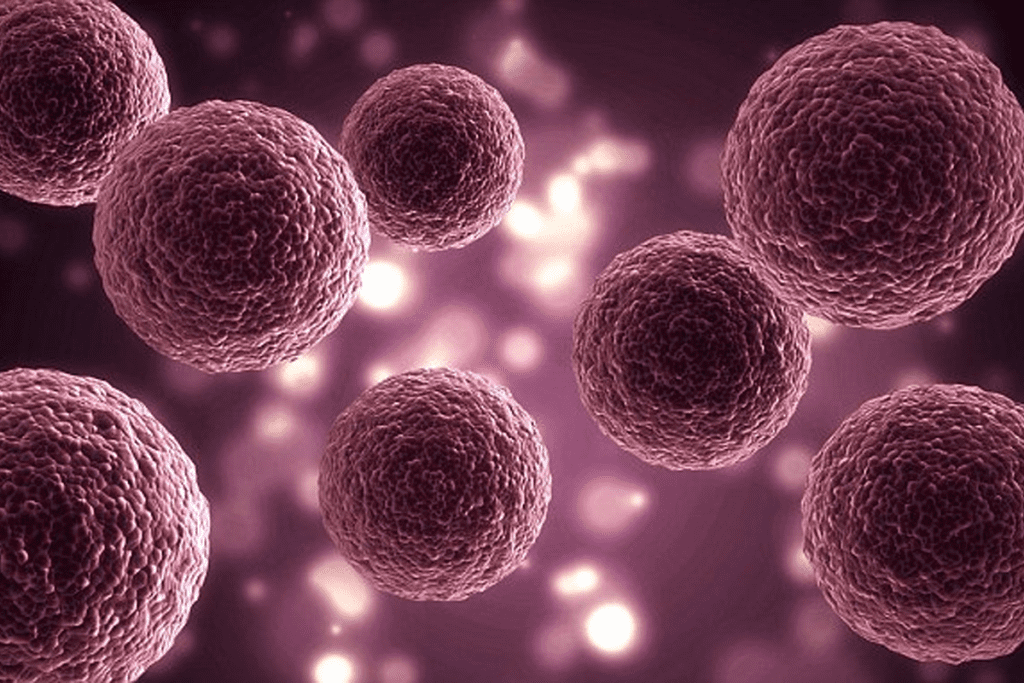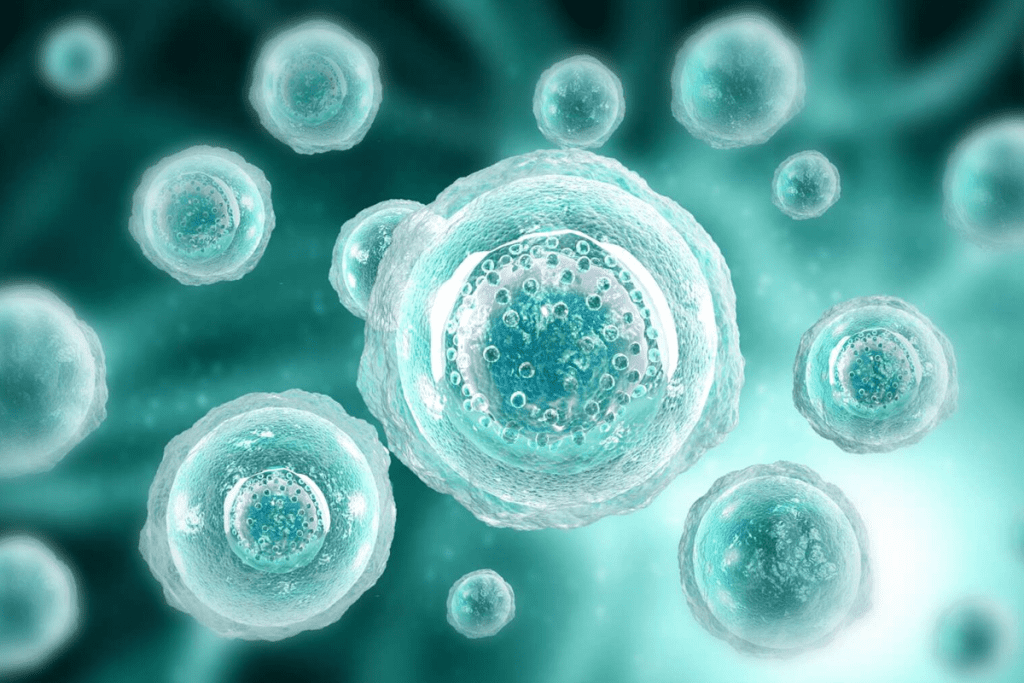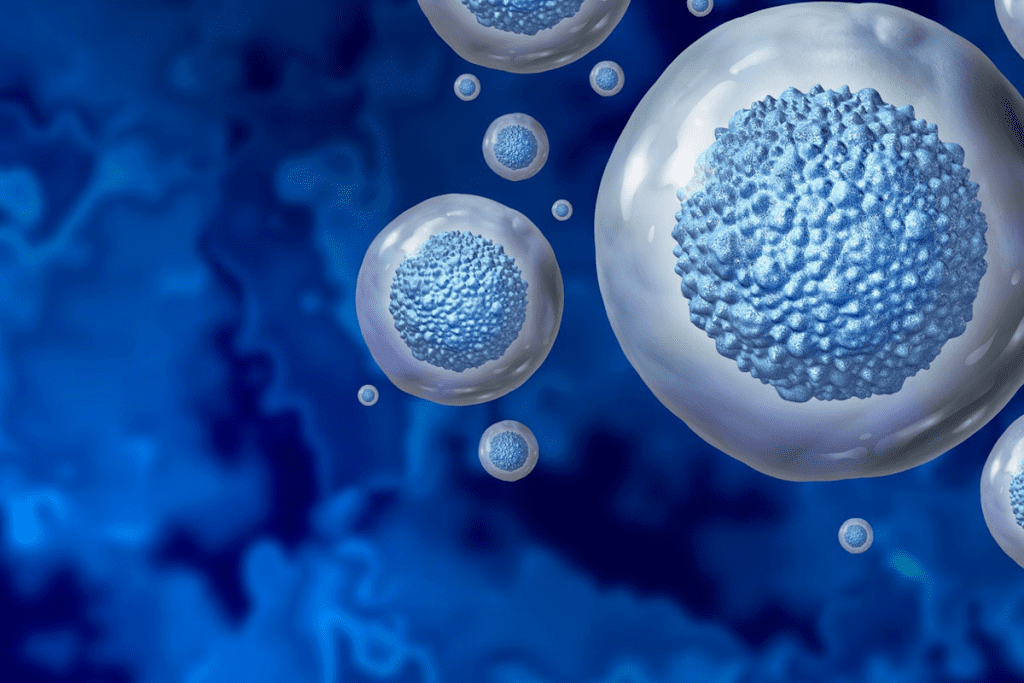Last Updated on October 22, 2025 by mcelik

This amazing ability makes stem cells very important for our health. Understanding stem cells and their functions helps us grasp how they contribute to our health.
Stem cells are a key area of study in medicine. They can turn into different types of cells. This makes them important for fixing damaged tissues and organs.
Stem cells have two main traits. They can self-renew and differentiate into specialized cells.
This ability makes stem cells very useful for medical research. They could help in treating many diseases.
Studying stem cells has been going on for decades. At first, scientists focused on their basic biology. They wanted to understand how they work in development and how to keep tissues healthy.
As technology improved, so did our understanding of stem cells. We now know about types of stem cells like embryonic, adult, and induced pluripotent stem cells. These findings have opened up new paths for using stem cells to help people.
The world of stem cells is complex. It shows the many roles and traits of these cells in life.
Progenitor cells are a type of stem cell. They can’t turn into as many cell types as others. They are key for fixing and growing tissues. The terms “progenitor cells” and “stem cells” are often confused, but they are distinct. Progenitor cells can only become certain cell types.
Precursor cells can turn into many cell types. They’re like progenitor cells and help grow and fix tissues. These cells are found in adult bodies and keep tissues healthy.
Other names for stem cells include colony-forming cells and mesenchymal stem cells. These names point to special groups of stem cells. Knowing about different stem cells helps us understand their roles in growth, repair, and health.
| Term | Description |
| Progenitor Cells | Cells with limited differentiation ability |
| Precursor Cells | Cells that can turn into various cell types |
| Mesenchymal Stem Cells | Cells involved in tissue repair and regeneration |

Stem cells are key to how our bodies repair and maintain their health. They can turn into many different cell types. This makes them very important for growth and fixing tissues.
Stem cells can make copies of themselves. This allows them to maintain their numbers within the body. Being able to self-renew helps keep tissues healthy and fixes them when they get hurt.
Differentiation Capabilities
Stem cells can become specific cells, like nerve or muscle cells. They do this based on signals from inside and outside the cell. Being able to turn into many cell types makes stem cells very important for growth and repairing tissues. Each type of stem cell can differentiate into various cell types.
Stem cells can also change to fit their surroundings in the body. This flexibility is key to fixing injuries or diseases. The location of stem cells in the body affects how flexible and helpful they are.
| Property | Description | Importance |
| Self-Renewal | Ability to replicate themselves | Maintains tissue homeostasis |
| Differentiation | Ability to become specialized cells | Crucial for development and repair |
| Cellular Plasticity | Ability to adapt to changing environments | Essential for responding to injury or disease |
It’s important to know about the different types of stem cells. This knowledge helps in medical research and finding new treatments. Stem cells are sorted by their origin, capabilities, and potential to differentiate into other cell types.
Embryonic stem cells come from embryos. They can turn into any cell in the body. These cells are pluripotent, meaning they can differentiate into any body cell. They are key for research and could help fix damaged tissues.
Adult stem cells, or somatic stem cells, live in adult tissues. They can turn into a few types of cells, but only those found in their own tissue. These cells help repair and maintain tissue health.
Induced pluripotent stem cells are made in labs. They start with adult cells and turn them into a state like embryonic stem cells. iPSCs hold great promise for personalized medicine and repairing damaged tissues, without the ethical issues associated with embryonic stem cells.
Mesenchymal stem cells are a kind of adult stem cell. They can become different cells, like bone, cartilage, and fat cells. They also have immunomodulatory properties, making them interesting for fixing tissues and engineering new ones.
Each type of stem cell offers unique opportunities for medical treatment and research. Understanding them and their workings is crucial for advancing stem cell science.

Stem cells are classified by their potency, which shows their ability to change into different cell types. This is key in understanding their role in regenerative medicine.
Totipotent stem cells can turn into any cell type, including placental cells. They are found in the early stages of an embryo.
Pluripotent stem cells can become almost any cell type, except placental cells. They are important in research because they can form many cell types. This makes them useful for medical uses.
Multipotent stem cells can turn into several cell types but are limited to specific ones. For example, they can make different blood cells.
Unipotent stem cells can only turn into one cell type. They can renew themselves but have very limited differentiation.
| Potency Type | Differentiation Ability | Examples |
| Totipotent | All cell types, including placental cells | Early embryonic cells |
| Pluripotent | Almost any cell type, excluding placental cells | Embryonic stem cells |
| Multipotent | Multiple cell types within a specific lineage | Hematopoietic stem cells |
| Unipotent | Only one cell type | Some adult stem cells |
Understanding the definition and meaning of stem cells by potency is crucial for research and medicine. This classification helps explain their capabilities and uses in medical treatments.
Stem cells are found in many parts of the human body. They help with growth, repair, and making new tissues.
In the early stages of development, stem cells are found throughout the body. Embryonic stem cells can turn into any cell type. This makes them very useful for research and treatments. Fetal tissues also have stem cells, helping organs grow and mature.
In adults, stem cells are in certain areas. They help keep tissues healthy and fix damaged cells. Adult stem cells can become a few different cell types. You can find them in bone marrow, fat tissue, and the gut lining.
Umbilical cord blood and placental tissues contain a high number of stem cells. They are full of hematopoietic stem cells, which make blood cells. These are great for transplants and regenerative medicine because they are safe and available.
| Source | Type of Stem Cells | Potential Applications |
| Embryonic Tissues | Embryonic Stem Cells | Regenerative Medicine, Tissue Engineering |
| Adult Tissues | Adult Stem Cells | Tissue Repair, Maintenance |
| Umbilical Cord Blood | Hematopoietic Stem Cells | Blood Disorders Treatment, Regenerative Medicine |
Knowing where stem cells come from is key for new research and treatments. As we learn more about stem cells, they will likely play a bigger role in medicine.
Stem cells can come from embryos, adult tissues, or umbilical cord blood. Knowing how they are collected helps us understand stem cell research and therapy better.
Embryonic stem cells come from embryos a few days old. They are taken from the inner cell mass of the blastocyst. This is then grown into stem cell lines. It’s a delicate process to keep the cells alive.
Adult stem cells are found in bone marrow, fat tissue, and blood. To get them, doctors use bone marrow aspiration or liposuction. The cells are then cleaned to find the stem cells.
Umbilical cord blood is also a good source of stem cells. After a baby is born, the cord blood is collected and stored. It’s tested for diseases and checked for cell count.
| Source | Method of Collection | Key Characteristics |
| Embryonic Tissues | Isolation from blastocyst | Pluripotent, can differentiate into any cell type |
| Adult Tissues | Aspiration or biopsy | Multipotent, limited differentiation |
| Umbilical Cord Blood | Collection after birth | Rich in hematopoietic stem cells |
These methods show how stem cells can be collected in different ways. Each method has its own benefits and challenges. As research continues, these methods will likely improve, opening up more uses for stem cell therapy.
Stem cells have unique visual traits that help scientists identify and study them. These traits are key to understanding and classifying stem cells.
Stem cells look different when seen under a microscope. They have a large nucleus compared to their cytoplasm, indicating they can grow and change significantly. Stem cells are usually round or oval, with a big nucleus. Their cytoplasm is thin and might have different parts.
To spot and study stem cells, scientists use special markers and methods. They use flow cytometry and immunohistochemistry to examine genes. Stem cell markers like OCT4, SOX2, and NANOG help prove stem cells can become many types of cells.
| Marker | Description | Significance |
| OCT4 | Octamer-binding transcription factor 4 | Essential for maintaining pluripotency |
| SOX2 | SRY-box transcription factor 2 | Involved in the regulation of embryonic stem cell pluripotency |
| NANOG | NANOG homeobox | Critical for self-renewal and pluripotency |
Understanding the morphology of stem cells is crucial for advancing regenerative medicine. It helps in finding new ways to heal and treat diseases.
Stem cells have a wide range of uses in medicine. They can turn into different types of cells. This makes them useful for treating many health issues.
Stem cell therapy is used to treat many diseases. For example, it’s a key treatment for some blood cancers. It’s also being looked at for treating autoimmune diseases and fixing damaged heart tissue.
Regenerative medicine uses stem cells to fix or replace damaged tissues. This is promising for treating diseases like Parkinson’s. Stem cells can grow new tissue, making them great for this field.
| Disease/Condition | Stem Cell Type | Therapeutic Approach |
| Parkinson’s Disease | Neural Stem Cells | Replacement of damaged neurons |
| Heart Disease | Mesenchymal Stem Cells | Repair of damaged heart tissue |
| Diabetes | Pancreatic Stem Cells | Regeneration of insulin-producing cells |
Stem cells are used in disease modeling and drug development. They help researchers study diseases and test treatments. This is key for creating personalized medicine.
In conclusion, stem cells have many uses in medicine. They offer hope for treating many diseases. As research grows, so will the benefits of stem cell therapy, helping patients all over the world.
Stem cell therapy is becoming more popular in medicine. It offers new hope for treating many diseases and injuries.
Proven Medical Benefits
Stem cell therapy has shown it can fix damaged heart tissue and grow new bone and cartilage. It’s also being used to fight some cancers. Mesenchymal stem cells are helping by reducing inflammation and speeding up healing.
| Condition | Treatment Outcome |
| Heart Disease | Repair of damaged heart tissue |
| Osteoarthritis | Regeneration of cartilage |
| Cancer | Targeted therapy using stem cells |
Stem cell therapy is also being looked at for treating brain diseases and spinal cord injuries. The induced pluripotent stem cells (iPSCs) are very promising. They can turn into many different cell types.
Ethical and regulatory issues are key in stem cell research. As this field grows, we must tackle the complex issues around stem cells.
The U.S. leads in stem cell research, but it’s not without debate. The use of embryonic stem cells is a big issue. Some say it destroys human life, while others see it as a chance for life-saving treatments.
Key ethical issues include the origin of stem cells, cloning risks, and the potential for uncontrolled cell growth. These concerns have created a complex regulatory environment.
In the U.S., stem cell research is mainly regulated by federal agencies like the NIH and FDA. The NIH Guidelines for Human Stem Cell Research guide ethical research. They stress the need for informed consent and responsible stem cell use.
The rules keep changing to balance science progress with ethics and safety.
Stem cells are a new frontier in research, opening doors to treating many diseases and injuries. Their ability to grow and change into different cell types makes them key for regenerative medicine.
As scientists learn more, using stem cells to treat diseases is becoming more common.
It’s important to know what stem cells are and how they help our health. Their benefits are huge, and research is finding new ways to use them in medicine.
Stem cells are special cells that can turn into different types of cells. They can also make more of themselves. This makes them crucial for growth, tissue repair, and maintaining overall body health.
Stem cells are sometimes referred to as progenitor or precursor cells, although these terms technically describe related but more specialized cell types. They are sometimes named based on how much they can change, like totipotent, pluripotent, multipotent, or unipotent.
Stem cells come from different places. They can be found in embryos, fetuses, adult tissues, and umbilical cord blood. Each source has its uses.
There are several types of stem cells. These include embryonic stem cells, adult stem cells, induced pluripotent stem cells (iPSCs), and mesenchymal stem cells. Each type has its own special features and uses.
Stem cells aid in growth, repair tissues, and promote overall body health. They do this by replicating themselves, transforming into different cells, and being very flexible.
Stem cells are collected in different ways. This includes getting them from embryos, extracting them from adults, and banking umbilical cord blood. It depends on where they come from.
Stem cells could be used to treat many diseases. They are being explored in medicine and regenerative treatments. This offers hope for many health issues.
Stem cell therapy has shown real benefits. It’s opening up new ways to treat diseases and injuries. This is very promising for medicine.
There are big debates about stem cell research. This is mainly because of the use of embryonic stem cells. Laws and rules vary by country to address these concerns.
Scientists use a microscope and special markers to find and study stem cells. This helps them understand what makes these cells unique.
Stem cells are sorted by their ability to change. They are called totipotent, pluripotent, multipotent, or unipotent. This shows how versatile they are.
Subscribe to our e-newsletter to stay informed about the latest innovations in the world of health and exclusive offers!